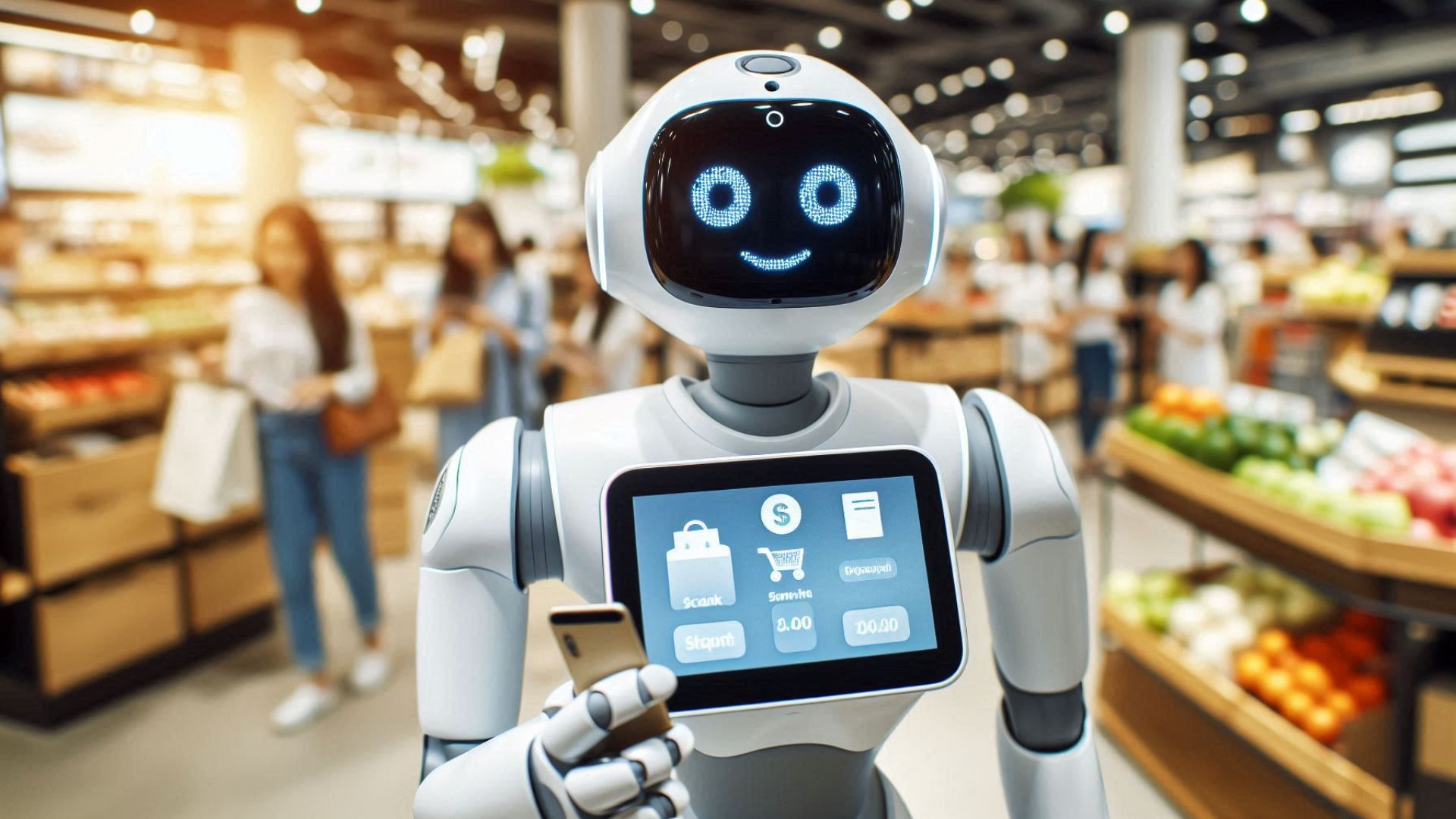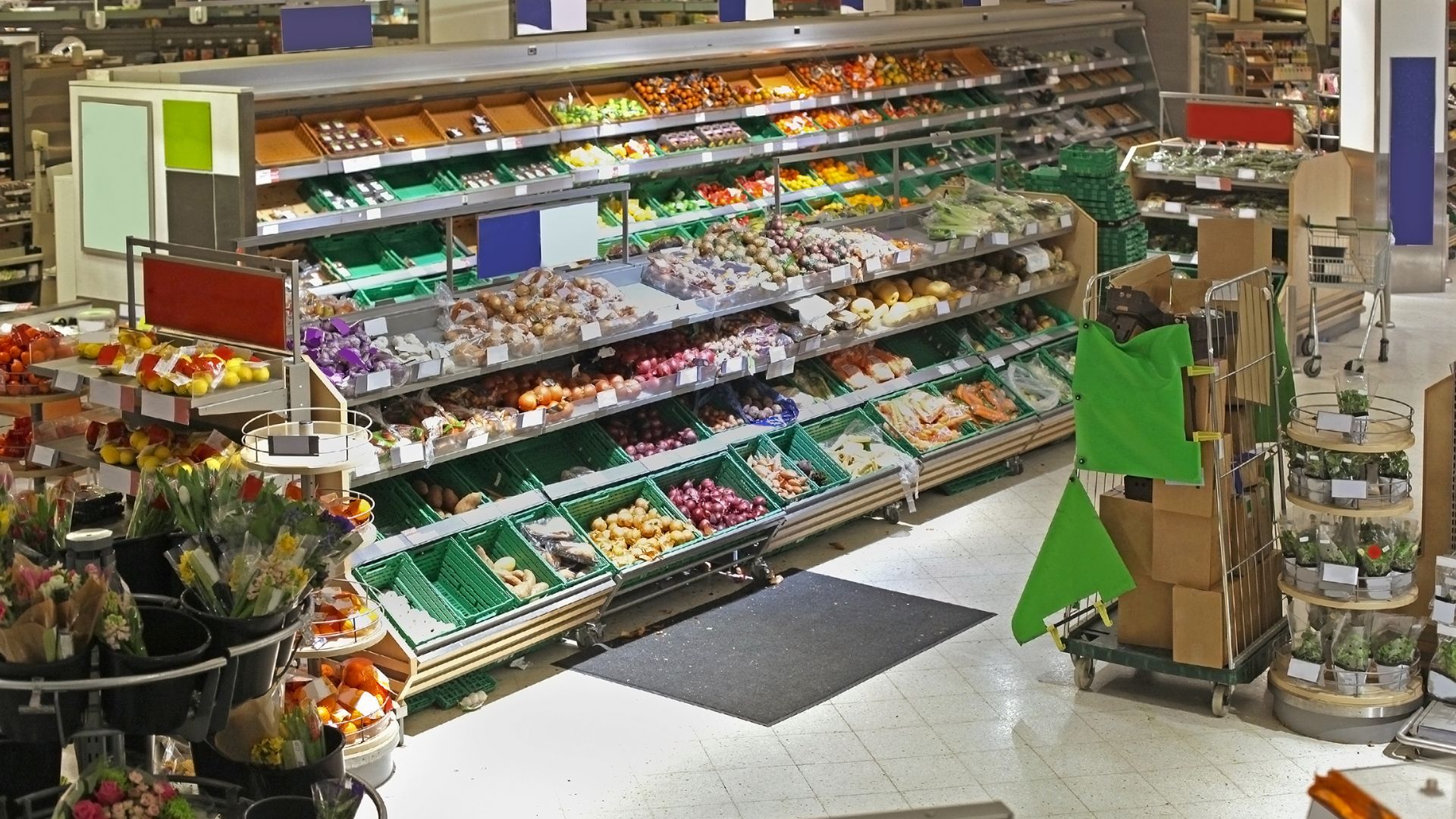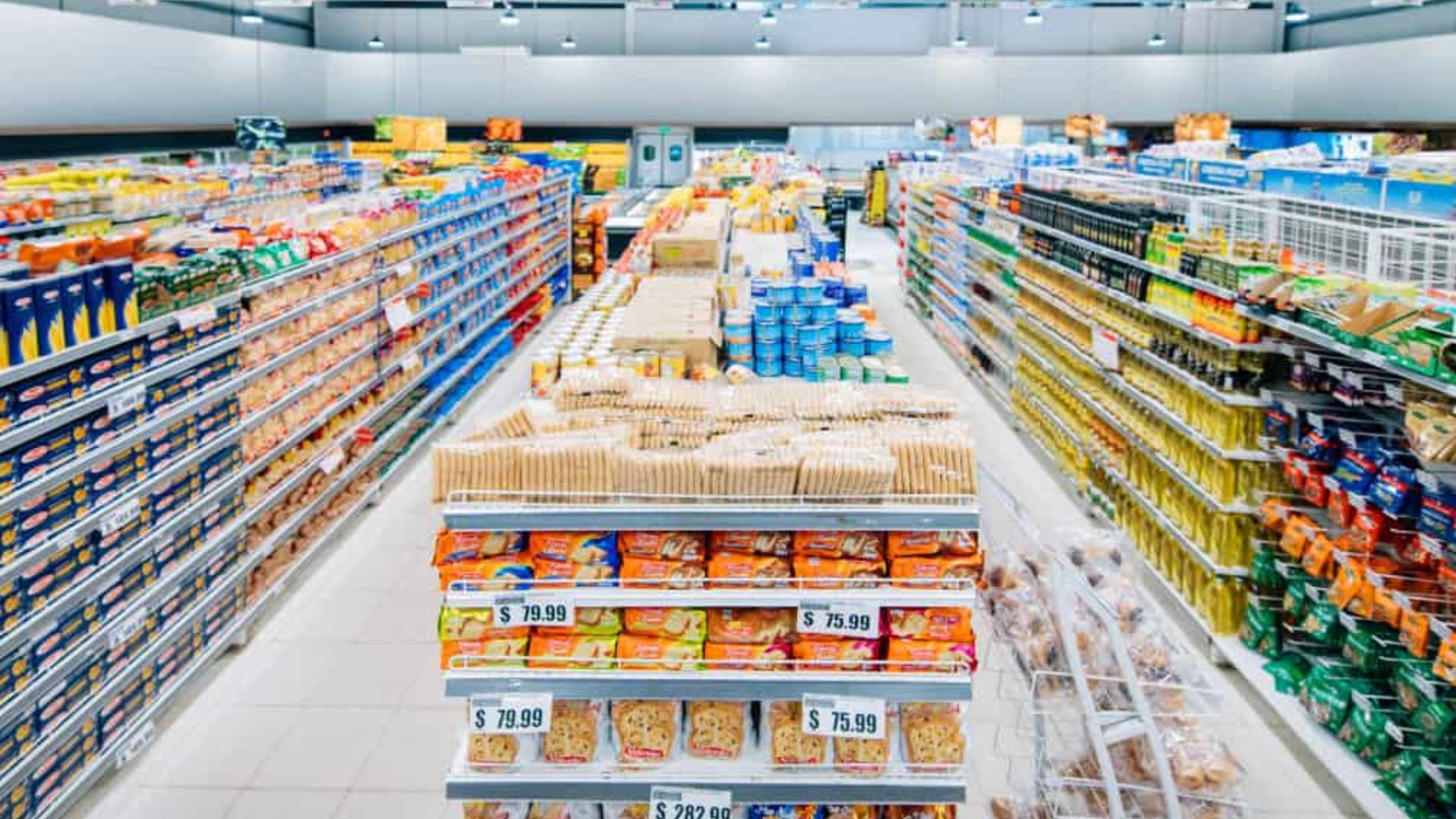The grocery industry is poised for significant transformation in 2024, driven by a mix of economic, technological, and consumer behavior shifts. With the U.S. grocery retail market having reached an estimated $872.5 billion in 2023, a further 13% growth is expected over the next five years. As the retail landscape evolves, grocery stores must stay ahead of the curve by adapting to emerging trends that impact how consumers shop, what they buy, and the overall shopping experience. This article explores the grocery store trends set to shape the industry in 2024, from value shopping to technological integration, and highlights how retailers can capitalize on these changes.
Value Shopping
The lingering effects of inflation continue to influence consumer behavior in 2024, with shoppers increasingly prioritizing value for money. As consumers face rising food prices, they are becoming more strategic in their shopping habits, actively seeking deals across multiple channels such as supermarkets, mass retailers, club stores, and online platforms to stretch their budgets. While 68% of shoppers report spending more on groceries than they did a year ago, they are now less likely to cut back on the number of items they purchase, with only 32% reducing their item count in February compared to 41% in October. This trend has led to a growing preference for private-label items and value-oriented retailers, as consumers recognize the quality and affordability these options offer. Here’s how:
Impact of Inflation on Consumer Behavior: With the cost of living rising, consumers are more budget-conscious than ever. Shoppers are focused on finding deals, discounts, and products that offer the best value, making pricing strategies critical for brands aiming to maintain customer loyalty. Notably, Boomers and Millennials are particularly concerned about rising food costs, driving them to seek more budget-friendly options.
Increased Preference for Private-Label Items: Private-label goods have gained significant traction as consumers turn to them for quality and affordability. Retailers are responding by expanding their private-label portfolios, investing in product quality, and ensuring these products meet consumer expectations.
Importance of Pricing Strategies: As value becomes a key differentiator, brands must adopt competitive pricing strategies. Leveraging ParallelDots' pricing intelligence tools can help retailers monitor competitor pricing in real-time, allowing them to adjust their pricing strategies dynamically and stay ahead in the market.
As consumers continue to seek the best deals, another major trend in grocery shopping is the rise of private labels, which are becoming increasingly popular in this inflationary environment.
Private Labels
Private-label products have evolved significantly from their early reputation as inferior alternatives to branded goods. In 2024, private labels are poised to play an increasingly important role in the grocery industry, fueled by growing consumer trust and retailer innovation. According to NIQ data, private label sales have captured 19.5% of the dollar share, marking a 3% year-over-year increase. However, this growth is beginning to slow, which presents an opportunity for Consumer Packaged Goods (CPG) brands to reclaim some shelf space. As private labels continue to innovate and expand, the competition between private labels and branded goods will intensify, shaping the future landscape of the grocery industry.
Growing Consumer Comfort and Trust: Consumers have become increasingly comfortable with private-label goods, viewing them as reliable and cost-effective alternatives to name-brand products. This shift in perception has led to a surge in demand for private-label offerings.
Market Share of Private Brands: Private labels now command a substantial share of the grocery market, contributing significantly to retailers' revenue. In response, many retailers are doubling down on their private-label strategies, focusing on product innovation and quality improvement to attract and retain customers.
Retailer Investment in Quality: Retailers are investing heavily in the quality and variety of their private-label products. By using tools like ParallelDots' ShelfWatch, retailers can ensure optimal stocking and visibility of these products on the shelf, enhancing their appeal to value-conscious shoppers.
With consumers leaning more towards private labels, sustainability and health has become another significant focus for them, playing a critical role in their purchasing decisions.
Sustainability and Health
As consumers become more environmentally conscious, sustainability and health are at the forefront of grocery store trends in 2024. Shoppers are increasingly seeking products that align with their values and 70% of them are even willing to pay a premium price for the products, particularly those that are sustainable, ethically sourced, and promote health and wellness.
- Demand for Sustainable Products: Consumers are prioritizing sustainability in their purchasing decisions, driving demand for products that are environmentally friendly and ethically sourced. Brands that fail to meet these expectations risk losing market share to more sustainable competitors.
- Increase in Plant-Based Offerings: The market for plant-based and meat substitute products continues to grow as consumers look for healthier, more sustainable alternatives to traditional meat products. Retailers are expanding their plant-based product lines to cater to this demand.
- Sustainability Goals: Brands are setting ambitious sustainability goals to meet consumer expectations. ParallelDots' AI-powered analytics can help retailers track the effectiveness of their sustainability initiatives, ensuring that they meet their targets and appeal to environmentally conscious consumers.
With sustainability and health driving purchasing decisions, technology also plays a vital role in transforming the grocery shopping experience.
Technological Integration

Technology is revolutionizing the grocery shopping experience, with AI and machine learning playing a pivotal role in enhancing operations, personalizing customer interactions, and reducing waste.
- AI and Machine Learning in Grocery Operations: AI is increasingly being used to optimize various aspects of grocery operations, from inventory management to personalized marketing. Retailers can use ParallelDots' AI solutions to analyze store-level data, predict demand, and ensure that shelves are always stocked with the right products.
- Smart Shopping Carts and Self-Checkout: The use of smart shopping carts and self-checkout systems is becoming more widespread, offering customers a faster, more convenient shopping experience. These technologies also provide retailers with valuable data on shopping habits and preferences.
- Reducing Food Waste: AI is helping retailers tackle food waste by accurately predicting demand and optimizing inventory levels. This not only reduces costs but also supports sustainability efforts, which are increasingly important to consumers.
As technology becomes more integrated into the grocery shopping experience, the blending of physical and digital channels, or omnichannel experiences, is also becoming essential for retailers.
Omnichannel Experiences
The blending of physical and digital shopping experiences is a key trend in 2024, with omnichannel strategies becoming essential for retailers looking to meet consumer expectations. In 2023, grocers identified optimizing digital channels (86%) for the omnichannel shopper as a top investment priority, recognizing the importance of meeting customers where they shop. This focus extends to increasing digital promotions and discounts (77%), expanding delivery and pickup slots (74%), improving inventory visibility (69%), and prioritizing personalization (47%). By investing in these areas, retailers are ensuring they can offer a seamless shopping experience that integrates both online and offline channels, allowing customers to shop how and when they want.
The rise in the use of grocery shopping apps and online platforms further highlights this trend, offering consumers the convenience of shopping from anywhere. Retailers are enhancing their digital offerings to provide a more personalized and efficient shopping experience. Additionally, the emergence of dark stores and micro-fulfillment centers is becoming more common as retailers seek to improve delivery efficiency. These facilities, optimized for online orders, allow for faster and more accurate fulfillment, catering to the demands of the modern omnichannel shopper.
As omnichannel experiences grow in importance, the shift toward online shopping and delivery services continues to reshape the grocery landscape.
Enhanced In-Store Experience

Holidays are all about shopping, and no matter how convenient e-commerce and delivery services have become, the season brings a heightened focus on omnichannel shopping. According to the October 2023 Digital Grocery Performance Report, 78% of shoppers express a desire to engage with a mix of digital channels and physical stores. In response, retailers are increasingly focusing on creating engaging, personalized in-store experiences that encourage customers to visit their physical locations, blending the best of both digital and in-person shopping worlds. These include:
- Technological Enhancements: Innovations like electronic shelf labels and inventory robots are enhancing the in-store experience by providing real-time information and improving efficiency.
- Curated Culinary Offerings: Retailers are emphasizing authentic, curated culinary experiences to differentiate themselves and attract food enthusiasts.
- In-Store Engagement: Personalized engagement is key to creating a memorable in-store experience. Retailers can better understand customer preferences by providing prompt customer service and tailor their in-store offerings accordingly.
With in-store experiences and other aspects of the grocery shopping journey, data-driven decision-making is becoming increasingly important to meet consumer demands effectively.
E-commerce and Delivery Services
The shift towards online grocery shopping shows no signs of slowing down, with consumers expecting a range of delivery options that cater to their needs.
- Growth in Online Grocery Shopping: Online grocery shopping is growing rapidly, driven by convenience and time savings. Retailers are expanding their e-commerce capabilities to meet this demand.
- Delivery Options: Consumers now expect a variety of delivery options, including curbside pickup and home delivery. Retailers are investing in logistics and technology to offer flexible and reliable delivery services.
- Expansion of Meal Kits: The popularity of meal kits and subscription models is increasing, providing consumers with convenient meal solutions that save time and reduce food waste.
Despite the growth of online shopping, the in-store experience remains crucial, and retailers are finding new ways to enhance this aspect of the shopping journey.
Data-Driven Decision Making
Data lies at the core of modern retail strategies, empowering retailers to make decisions that enhance growth and elevate customer satisfaction. By harnessing data-driven insights, retailers can craft promotional strategies that are finely tuned to customer preferences, helping to identify emerging trends and optimize promotional efforts for increased sales. The importance of real-time data cannot be overstated, particularly when it comes to inventory and supply chain management, where timely and accurate information ensures that stock levels are maintained efficiently and customer demands are met promptly. Additionally, the strategic use of consumer data allows retailers to gain a deep understanding of shopping behaviors, enabling them to create personalized shopping experiences that not only meet but exceed customer expectations, fostering loyalty and repeat business.
Conclusion
2024 has been a year of substantial changes driven by economic pressures, technological advancements, and evolving consumer preferences for the grocery industry. From the emphasis on value shopping and the rise of private labels to the growing demand for sustainability and the integration of advanced technologies, these grocery store trends are shaping the future of retail. Retailers who adapt to these trends—by leveraging data-driven decision-making, enhancing both online and in-store experiences, and embracing omnichannel strategies—will be better positioned to meet consumer demands and stay ahead of the competition.
To navigate these trends effectively, consider leveraging advanced tools like those offered by ParallelDots. Our AI-powered solutions can help you optimize your retail operations, enhance customer experiences, and drive growth. Book a demo today to explore how our services can support your business in staying ahead in the rapidly evolving grocery landscape.


